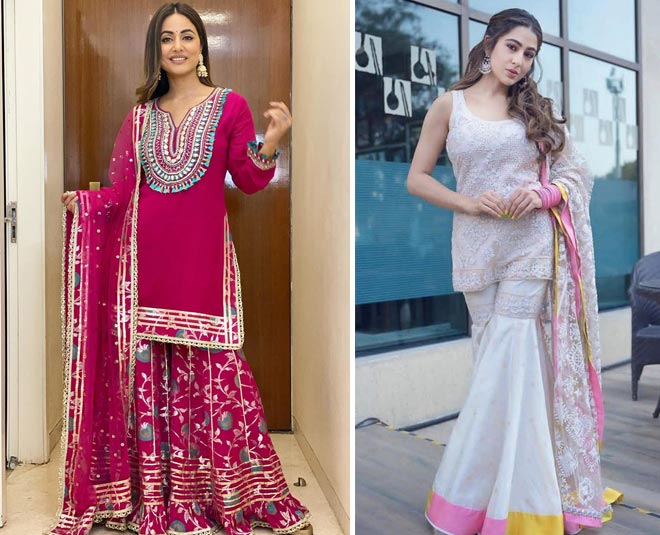Article: SHARARAS AND GHARARAS: A COMPREHENSIVE GUIDE

SHARARAS AND GHARARAS: A COMPREHENSIVE GUIDE
- Origin and History: Shararas and ghararas originated in the Mughal era and have since been cherished as timeless classics in South Asian fashion. They were initially worn by royalty and aristocrats but have now become popular among women of all backgrounds.

-
Design and Construction: Shararas are wide-legged trousers that flare out dramatically from the knee or calf, often featuring intricate embellishments and embroidery. Ghararas, on the other hand, are similar but feature more gathers and pleats, creating a distinctively fuller look.

-
Fabrics and Embellishments: These garments are typically crafted from luxurious fabrics such as silk, chiffon, and georgette, which drape beautifully and lend a regal aura to the wearer. They are often adorned with zari work, gota patti, sequins, and intricate embroidery, making them perfect for festive occasions and weddings.

-
Styling: Shararas and ghararas can be styled in a myriad of ways to suit various occasions. They can be paired with matching kurtas, short shirts, or crop tops, along with statement jewellery and embellished footwear, to create a stunning ensemble that exudes sophistication and charm.

-
Sharara: A Sharara is a flared, wide-legged trouser traditionally paired with a short kameez (tunic) and a dupatta (scarf). The trousers are heavily pleated and usually embellished with intricate embroidery, Zari work, or embellishments.

-
Gharara: Ghararas feature a distinctive silhouette with a heavily pleated, flared lower portion resembling a skirt. The garment is paired with a short kameez and a dupatta, often adorned with intricate handwork and embellishments.

7.Significance and Cultural Context:
Wedding Attire: Shararas and ghararas are commonly worn as bridal attire in South Asian weddings, symbolizing tradition, grace, and sophistication.
Festive Wear: These garments are also worn during festivals, celebrations, and special occasions, reflecting cultural pride and heritage.
Symbol of Femininity: Shararas and ghararas exude femininity and grace, celebrating the beauty of womanhood in South Asian culture.
Visit our Website www.textilenow.com today to explore these exquisite ensembles and embrace the beauty of tradition reimagined for the modern world.
Conclusion:
Shararas and ghararas are more than just garments; they are embodiments of tradition, elegance, and cultural heritage. Whether worn for weddings, festivals, or special occasions, these timeless outfits continue to captivate hearts with their beauty and grace, transcending generations and geographical boundaries. Embracing Shararas and ghararas is not just about wearing attire; it's about celebrating a rich legacy of craftsmanship and tradition that continues to inspire and enchant.


